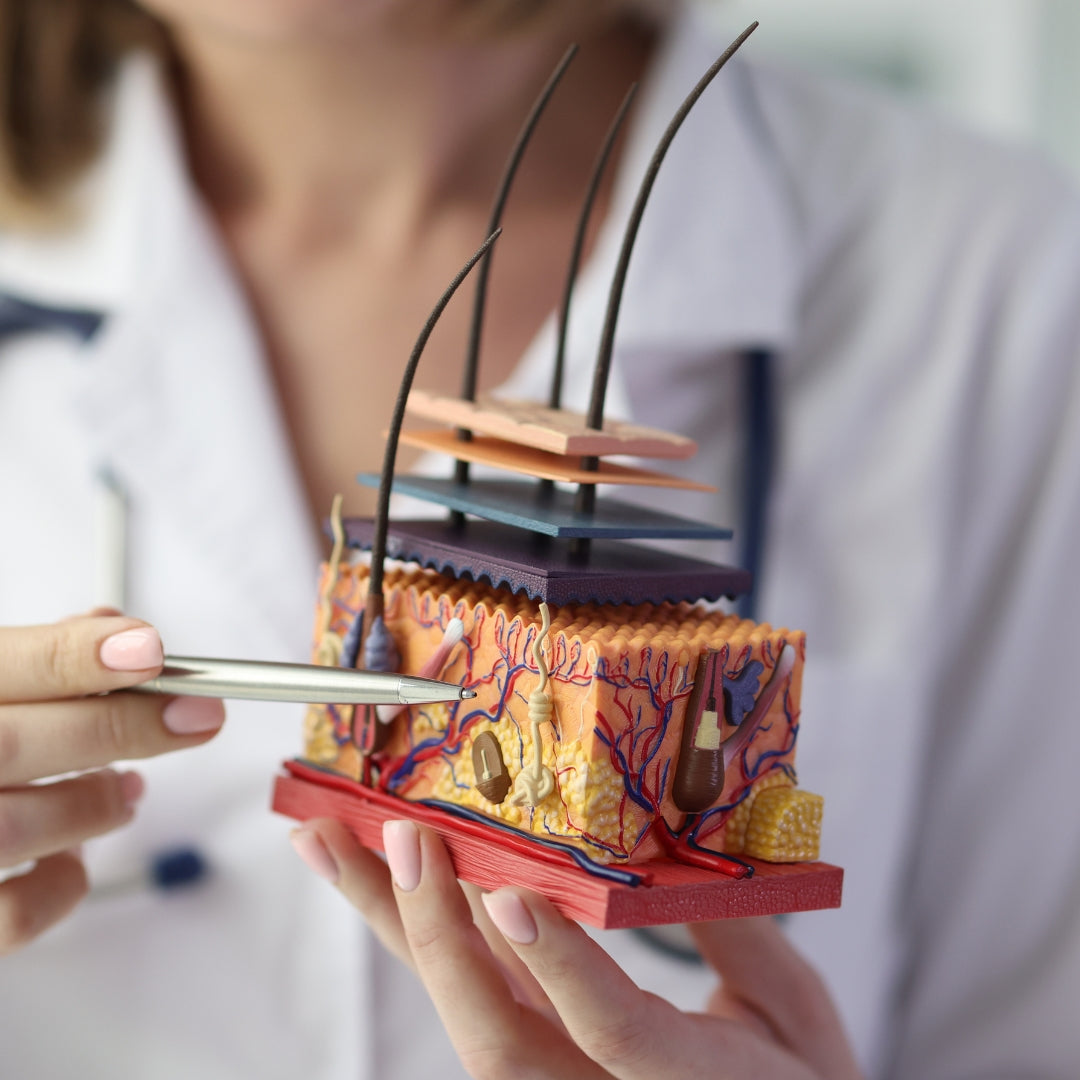Adapalene vs Tretinoin: who reigns supreme?
Among the retinoids, tretinoin is arguably one of the most potent and certainly the most widely investigated for the management of photoaging.
Somewhere along the way, a third-generation retinoid known as Adapalene is slowly taking the spotlight. However, precisely what is adapalene? Is adapalene another trend that is here today and gone tomorrow?
This article will aim to explore:
- Why are there so many different topical retinoids?
- What is Adapalene?
- Adapalene vs Tretinoin - which is better for me?
Why are there so many different topical retinoids?
Tretinoin is the most widely studied retinoid when it comes to photoaging. In fact, Tretinoin was the first retinoid studied for hyperpigmentation in individuals with melanin-rich skin. A 40-week double-blind study included 68 black men and women who had dark spots from acne, shaving issues, eczema, ingrown hairs, and folliculitis. Results showed improvements with tretinoin 0.1% cream starting at week four. However, 50% of those treated experienced skin reactions causing unwanted pigmentary changes (the opposite of what we want). Consequently, chemists developed weaker tretinoin formulations and other milder forms of retinoids to address unwanted pigmentary changes.
The milder forms of retinoids include retinyl esters, retinol and retinaldehyde, which are all converted to tretinoin by the body. They are less irritating and less potent, with retinyl esters being the least potent.

What is Adapalene?
Adapalene, considered a third-generation synthetic retinoid, is a beacon of hope for those struggling with acne and hyperpigmentation. Its unique ability to target abnormal skin cell turnover and division, coupled with its anti-inflammatory properties make it a promising solution. Thanks to its receptor selectivity, adapalene causes less skin irritation compared to tretinoin, and adapalene gel is proving to be a successful treatment for acne.
When it comes to skin brightening, patients treated with adapalene gel showed notable lightening of photoaged lesions compared to those using a placebo gel after just one month. After nine months, 57% of patients using adapalene 0.1% and 59% using 0.3% had lighter lesions, while only 36% in the placebo group saw similar results (p < 0.05). Additionally, histological assessments showed fewer abnormal skin cells and lower melanin levels in the skin of those treated with adapalene versus the placebo group. A review of before and after photographs after nine months of treatment showed marked improvements in wrinkles and other signs of photoaging with adapalene. Adapalene was well tolerated by all patients in the study with no unwanted pigmentary changes.
To date, there are no large-scale clinical trials comparing tretinoin vs adapalene for the management of photo ageing. For this reason, tretinoin remains the drug of choice for treating stubborn dark spots, melasma and photo ageing.
Adapalene vs Tretinoin
Thanks to its selective receptor subtypes, adapalene has emerged as a more successful option than tretinoin for managing acne and hyperpigmentation associated with acne.
Now you are probably wondering if receptor selectivity is really that important. Receptor selectivity is wildly important when it comes to treating specific conditions. For example, Tazarotene has a different receptor preference and is more effective for managing psoriasis.
Adapalene 0.1% gel can be purchased over the counter without a prescription compared to tretinoin, reducing cost and treatment delay.
Can I use Adapalene for anti-ageing?
A small study of 40 women looked at using 0.3% adapalene, once daily for 24 weeks. In this study, adapalene was able to decrease forehead wrinkles, periorbital wrinkles, and improved overall hydration.
From this study, it is safe to say adapalene less than 0.3% is inferior to tretinoin when it comes to boosting collagen and reducing wrinkles. However, if acne and acne marks is your primary concern, then adapalene has proven to be more beneficial.
If anti-ageing is your primary concern, then tretinoin remains the drug of choice. With this in mind, we are confident adapalene is not another trendy ingredient with bold claims, but serves a crucial role for managing acne.
REFERENCES
- Mukherjee, S et al. Retinoids in the treatment of skin aging: an overview of clinical efficacy and safety. J Clin Interv Aging. 2006 Dec; 1(4): 327–348.
- Callender, V.D., Baldwin, H., Cook-Bolden, F.E. et al. Effects of Topical Retinoids on Acne and Post-inflammatory Hyperpigmentation in Patients with Skin of Color: A Clinical Review and Implications for Practice. Am J Clin Dermatol 23, 69–81 (2022). https://doi.org/10.1007/s40257-021-00643-2
- Bagatin, E et al. Comparable efficacy of adapalene 0.3% gel and tretinoin 0.05% cream as treatment for cutaneous photoaging. European Journal of Dermatology, 28, 343-350.



